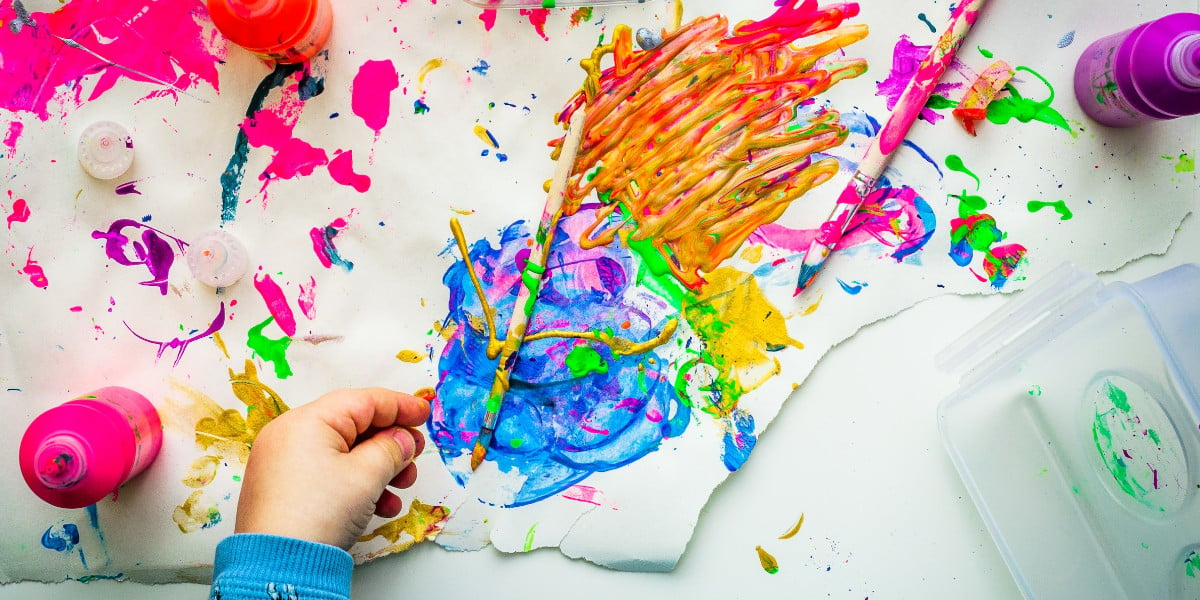
4 Ways for Your Child to Self-Express Through Art Therapy
January 31 is Inspire Your Heart With Art Day!
Navigating parenthood can be a difficult yet rewarding task. Watching your child develop and begin to shape their personalities can be an exciting time, but you may not always see eye to eye. Even as we age, it is not easy to express our thoughts and emotions to those around us. For children, it is even more difficult to do so, because they are still discovering themselves, and trying to understand new experiences as they arise. It can be frustrating for both parties when the communication is not allowing opportunity to connect, and all you both want is to understand one another. Art therapy is an expressive form of therapy that can also be used within the home; AT is useful for improving self-esteem and awareness, enhancing social skills and emotional regulation, cultivating emotional resilience, and reducing distress. It can be empowering for an individual to have a creation made from their experiences, and admired by those surrounding them.
Here are four ways you can improve communication with your child. These activities support creating healthy habits and work even better when they are implemented on a daily or weekly basis!
1. Create an emotion wheel: You and your child can create a wheel that can be posted within the home to reference. This wheel can contain 6 colors to attach to the most simplistic emotions (i.e. blue or purple = sad). From there, you can discuss which six words match the 6 colors chosen and what that means to them, so when that emotion comes forth and they are unable to easily express it, they can point to the area on the wheel that best describes that moment.
2. Body scan: Draw a figure on any surface, and from there let your child use color to portray what their body is currently feeling like. This can be a simple tool for the child to understand that sometimes these thoughts can come up as physical symptoms as well, or just another way to talk about emotions and where they show up in the body. You can even take it to a different level and have them make a collage of what’s inside their body.
3. Make a painting, drawing, or sculpture: Using any media either available or of the child's choosing, they can create a piece of art that encompasses their thoughts, or emotions. This allows them to use a canvas or sculpture to make their experience into a tangible item in order to further release any pent up emotions, and to create something beautiful out of those emotions.
4. Drawing in sand: This can also be done with rice if needed, but sand can be placed into a shallow box and the child can start drawing in there, and once completed, it can be shaken away. This is a good way for them to show what they are currently experiencing, while also understanding that these emotions may seem heavy and overwhelming now, but they won’t last forever. They will get a fresh canvas to begin again.
For more inspiration, look for YouTube videos with instructions like this one: Create Your Wheel of Emotion.
Or meet our Lifeologie Counselors who specializes in treating children, tweens and teens.

About Opal Phillips
Opal Phillips received her Bachelor of Fine Arts; Emphasis in Sculpture with a Minor in Psychology from Wichita State University, and is currently earning her Master’s in Clinical Mental Health Counseling from the University of Nevada, Las Vegas (UNLV). She primarily works with youth, adolescents, and young adults. She is interested in navigating early developmental transitions, behavioral issues, anxiety, depression, self-esteem, stress management, life transitions, and meaning making. She is also LGBTQ+ and persons with disabilities inclusive.
Meet Me



